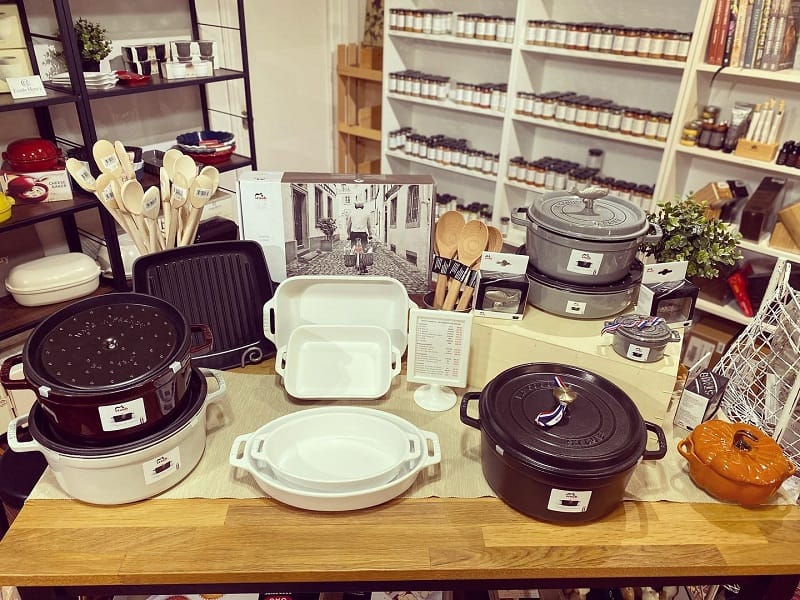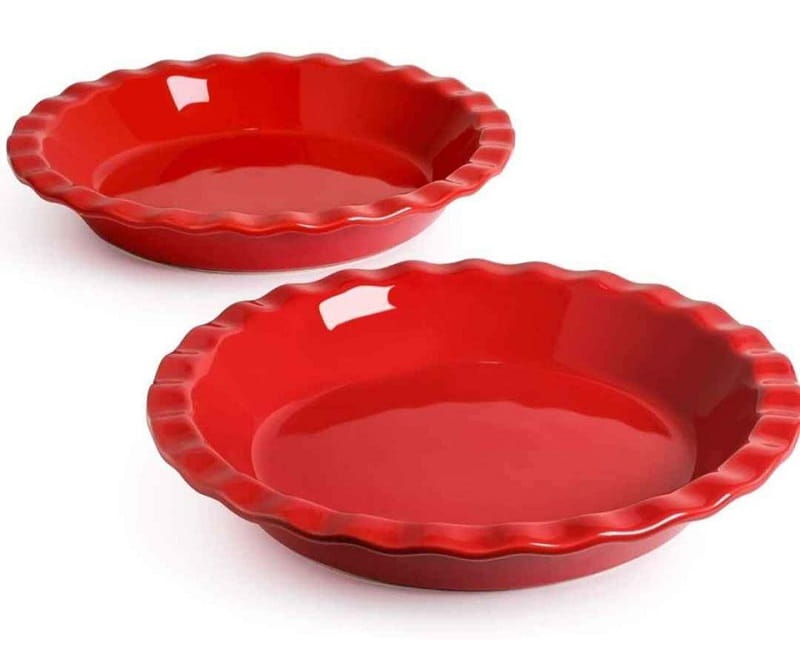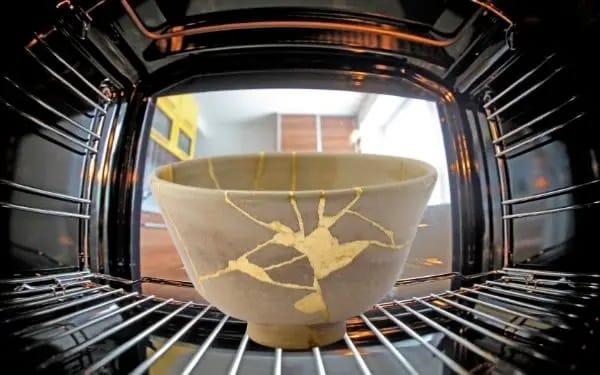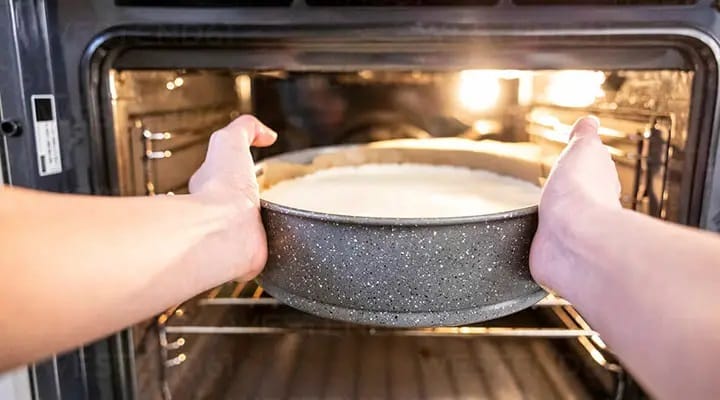The use of ceramics in the kitchen, whether for bakeware, serve ware, or decorative purposes, has been a long-standing tradition in many cultures. The reason for its popularity is not only due to the aesthetic appeal of ceramics but also its versatility and ability to withstand variations of temperature. However, a question that often arises amongst cooking enthusiasts and homemakers alike is – can ceramic go in oven? The simple answer is yes, but it is crucial to understand the specifics and guidelines of using ceramic bakeware in the oven to ensure a safe and successful cooking experience.
In this article, we will explore the properties of ceramics that make them suitable for oven use, as well as precautions to keep in mind to avoid breakage and other mishaps. So, let’s dive in to unveil the mysteries of ceramic bakeware and put your mind at ease, knowing you can confidently use your cherished ceramic pieces for your next culinary masterpiece.
What is Ceramic?

Ceramic dishes have been a staple in my household ever since I can remember. They’re versatile, sturdy, and perfect for all sorts of occasions. But what exactly are ceramic dishes? Today, I’m going to break it down for you in a matter-of-fact way.
Ceramic dishes are made from clay that has been fired at high temperatures. The clay is usually mixed with other materials, such as feldspar, quartz, and kaolin, to give it strength and durability. Once the clay is formed into the desired shape, it is fired in a kiln at temperatures ranging from 1,000 to 2,500 degrees Fahrenheit.
The firing process is what makes ceramic dishes so sturdy and durable. The high temperatures cause the clay particles to fuse, creating a hard, non-porous surface. This means ceramic dishes resist scratches, chips, and cracks, making them perfect for everyday use.
One of the great things about ceramic dishes is that they come in various styles and designs. From classic white dinnerware to colorful, hand-painted plates, there’s a ceramic dish for every taste and occasion. And because they’re so durable, they can be used for everything from casual family dinners to formal dinner parties.
Ceramic dishes are also easy to care for. They can be washed in the dishwasher or by hand and microwave safe. However, it’s important to note that some ceramic dishes may not be safe for use in the oven or on the stovetop, so be sure to check the manufacturer’s instructions before using them in these ways.
Types of Ceramic
I have encountered various ceramic dishes over the years, each with its unique characteristics and uses. Here, I will share my knowledge of the different types of ceramic dishes and their functionalities.
- Earthenware: Earthenware is made from clay and fired at low temperatures. These dishes are known for their rustic appearance and are perfect for serving soups, stews, and curries. They are not microwave or dishwasher-safe, so it is important to hand wash them.
- Stoneware: Stoneware is a ceramic dish made from clay and other materials, such as feldspar and quartz. These dishes are fired at high temperatures and are known for their durability and strength. Stoneware is perfect for baking casseroles, roasting meat, and serving salads. They are microwave and dishwasher-safe, making them easy to clean.
- Porcelain: Porcelain is a ceramic dish made from kaolin, feldspar, and quartz. These dishes are fired at very high temperatures, which results in their smooth and glossy appearance. Porcelain is perfect for serving delicate desserts, such as shuffles and custards, as well as for formal dining occasions. They are microwave and dishwasher-safe, making them easy to use and maintain.
- Bone China: Bone China is a type of porcelain made from clay, feldspar, and bone ash. These dishes are known for their translucent appearance and are perfect for serving hot beverages like tea and coffee. Bone china is also great for formal dining occasions, as it is elegant and sophisticated. They are microwave and dishwasher-safe, making them easy to clean.
- Terra Cotta: Terra cotta is a type of earthenware made from clay and fired at low temperatures. These dishes are known for their rustic appearance and are perfect for serving Mexican and Mediterranean cuisine. They are not microwave or dishwasher-safe, so it is important to hand wash them.
In conclusion, ceramic dishes come in various shapes, sizes, and materials, each with unique characteristics and uses. Whether entertaining guests or enjoying a meal with your family, having the right ceramic dish can make all the difference. So, take the time to explore the different types of ceramic dishes available and find the perfect one for your needs.
Can Ceramic Go In Oven?
If someone wonders whether ceramic can go in the oven, the answer is yes, but only if it is labeled oven-safe. Ceramic baking dishes are popular because they cook food evenly and retain heat well. However, not all ceramic dishes are safe to use in the oven. Only those with thick ceramic or heat-protective glazing can withstand high temperatures.
Preheating the dish and avoiding exposing it to thermal stress is essential. Soaking the dish beforehand can help keep it moist and prevent cracking. Many dishes, such as pie dishes and casserole dishes, are made from stoneware, which is safe for use in the oven. As a baking expert, it’s good to remember that oven-safe ceramic can withstand temperatures up to 3,000 degrees Fahrenheit (1,649 degrees Celsius).
Can You Put Ceramic Baking Sheets In The Oven?

If you’re wondering whether or not you can put a ceramic baking sheet in the oven, there’s good news. According to factual data, most types of ceramics are suitable for oven use at reasonable temperatures. Ceramic bakeware cooks food evenly and retains heat well after baking, making it ideal for casseroles and cobblers.
It’s important to note that if you’re putting a refrigerated ceramic dish in a really hot oven, remove it from the fridge or let it sit at room temperature for a while first. So, confidently use that ceramic baking sheet whether you’re making a batch of cookies or a savory casserole!
Are Ceramic Bread Loaf Pans Oven-Safe?
Ceramic bread loaf pans are an excellent choice for baking enthusiasts who want to ensure their homemade bread is perfect every time. These pans are oven-safe and can withstand high temperatures without cracking or breaking. Additionally, ceramic loaf pans are versatile and can be used in the dishwasher and microwave without causing any damage.
While it’s important to note that ceramic doesn’t conduct heat as well as metal pans, they still produce great results for baked goods where crust formation is not critical. Ultimately, baking with a ceramic loaf pan is a wonderful way to infuse your delicious bread with a classic touch that will make your creations stand out.
Related Reading:
- Can Self-Cleaning Oven Kill You
- Can Le Creuset Go In Oven
- Can You Put A Crock Pot In The Oven
- Can Calphalon Pans Go In The Oven
- Is It Safe To Eat Food Cooked In A New Oven
What Types Of Ceramic Dishes Can Go In The Oven?

Not all ceramic dishes are created equal when it comes to oven use. I will explore the different types of ceramic dishes that can go in the oven so that you can make the most of your kitchen tools. The most common types of oven-safe ceramic dishes include:
- Stoneware: Stoneware is a type of ceramic fired at a high temperature, making it durable and able to withstand high heat. Stoneware dishes are great for baking casseroles, pies, and other dishes that require a long cooking time in the oven. They can also be used for serving food, as they retain heat well and keep food warm for longer.
- Porcelain: Porcelain is another type of ceramic that is oven-safe and great for baking. Porcelain dishes are often used for baking soufflés, quiches, and other delicate dishes that require gentle, even heat. They are also great for serving food; they look clean and elegant.
- Earthenware: Earthenware is a type of ceramic fired at a lower temperature than stoneware or porcelain, making it more porous and less durable. However, earthenware dishes can still be used in the oven as long as they are not subjected to extreme temperatures. They are great for baking bread, cakes, and other desserts that require moist, even heat.
- Ceramic-coated metal: Some ceramic dishes are made with a metal core coated in a ceramic layer. These oven-safe dishes can be used for baking, roasting, and serving food. They are often more durable than pure ceramic dishes and can be used on the stovetop and oven.
Can Ceramic Melt Or Crack In the Oven?
Ceramics can go in the oven without melting, thanks to its high heat resistance property of up to 3,000 degrees Fahrenheit. However, it is important to note that ceramic bowls and plates are made of brittle materials and can shatter if exposed to heat they weren’t manufactured for or experience a rapid temperature change. That’s why it’s crucial always to follow the manufacturer’s instructions and ensure that the ceramic cookware set is oven-safe.
Preheating the oven beforehand and avoiding cold food on hot plates also helps to prevent cracking. Friendly reminder, handling ceramic dishes with care is crucial to ensure their longevity in the kitchen.
Are There Certain Times Or Scenarios When It’s Not Safe To Put Ceramic In The Oven?
I have wondered if there are certain times or scenarios when it’s unsafe to put ceramic in the oven. After researching and experimenting, I have come to a few conclusions I’d like to share with my fellow home cooks.
First and foremost, it’s important to note that not all ceramics are created equal. Some ceramics, such as pizza stones and Dutch ovens, are designed for high-heat cooking. These ceramics are typically made from stoneware or earthenware, known for their ability to withstand high temperatures without cracking or breaking.
However, not all ceramics are suitable for use in the oven. For example, decorative ceramic plates or bowls may not be able to handle the extreme temperatures of the oven and could crack or even shatter when exposed to high heat. It’s important to check the manufacturer’s instructions or research before putting any ceramic dish in the oven.
Another factor to consider is the type of food you are cooking. Certain dishes require higher temperatures than others, so it’s important to be mindful when choosing your cookware. For example, if you’re baking a pizza on a ceramic pizza stone, you’ll need to preheat the oven to a high temperature to ensure the crust cooks properly. On the other hand, if you’re making a casserole or other dish that doesn’t require high heat, you may be able to use a less heat-resistant ceramic dish.
Finally, it’s essential to consider the age and condition of your ceramic cookware. Over time, ceramics can become weakened or damaged, which can make them more prone to cracking or breaking in the oven. If you’re unsure about the condition of your ceramics, it’s best to err on the side of caution and avoid using them in the oven until you can have them inspected by a professional.
The Benefits Of Using Ceramic Dishes In The Oven

One of the main benefits of using ceramic dishes in the oven is their ability to distribute heat evenly. This means your food will cook more evenly, resulting in better taste and texture. Plus, since ceramic dishes retain heat well, your food will stay warm even after you take it out of the oven.
Another advantage of using ceramic dishes in the oven is their durability. Unlike some other types of cookware, ceramic dishes are built to last. They are resistant to chipping and cracking, which means you can use them again and again without worrying about them breaking.
If you are concerned about using ceramic dishes in the oven, rest assured that they are completely safe. Ceramic cookware is made from natural materials, so no harmful chemicals or toxins can leach into your food. Many ceramic dishes are even dishwasher-safe, making them incredibly easy to clean.
Of course, one of the biggest benefits of using ceramic dishes in the oven is their versatility. You can use them for baking casseroles, roasting meats, making desserts, and cooking vegetables. And because they come in various shapes and sizes, you can easily find one that fits your needs.
So if you are looking for a way to make your meals even better, I highly recommend trying ceramic dishes. Whether you are a seasoned chef or a beginner cook, you will surely appreciate their many benefits.
What Are The Disadvantages Of Using Ceramic In The Oven?
While ceramic cookware has its advantages, such as being non-toxic and easy to clean, there are also some disadvantages to using ceramic in the oven.
First and foremost, ceramic tends to conduct heat unevenly. While this may not be a problem when cooking on the stovetop, it can become an issue when using ceramic in the oven. This uneven heating can result in some parts of your dish being overcooked while other parts remain undercooked.
Another disadvantage of using ceramic in the oven is its fragility. Ceramics is a delicate material that can crack or even shatter when exposed to sudden changes in temperature. If you accidentally drop your ceramic dish or expose it to extreme heat, it may break or become unusable.
Additionally, ceramic dishes are not always suitable for all types of cooking. For example, ceramic is not recommended for acidic foods, such as tomato sauce, as the acid can react with the ceramic and cause it to leach into your food. This can result in a metallic taste and may also be harmful to your health.
Finally, ceramic dishes are often more expensive than other types of cookware. While the initial investment may be worth it for some, it may not be practical for others on a budget.
What Is The Ideal Oven Temperature For Cooking With Ceramic Bowls
In general, it’s best to avoid going above 450 degrees F with your stoneware in the oven. However, the maximum temperature at which a ceramic bowl can be heated without breaking is between 1800 and 3000 degrees Fahrenheit, so you have plenty of leeways as long as you stay under that threshold.
Moreover, it’s recommended to reduce the oven temperature by 25 degrees Fahrenheit for sweet recipes and pastries because ceramic cookware retains more heat than metal ones. It’s also essential to avoid extreme temperature changes that could crack or break your ceramic bowls, so it’s advisable to let them gradually warm with the oven rather than pre-heating them separately.
Finally, high-fired ceramics are the best choice for oven-safe bowls because they typically withstand high temperatures. Following these tips, you can cook delicious and evenly baked treats with your ceramic bowls without risking any damage.
FAQs About Can Ceramic Go In Oven
Can Ceramic be Used for Baking?
Ceramics is an excellent material for baking, and it can be used for various dishes, especially sweets. One of the benefits of baking with ceramic is that it tends to cook food evenly. Ceramic dishes can withstand high temperatures, making them a great option in a wood-fired oven.
Additionally, they can be easily cleaned with scouring pads and dish soap. It’s important to note that not all ceramic dishes are oven-safe, so it’s essential to check the label before use. Ceramics are great for baking, storing, and serving meals since foods can be done and stored in their baking dish. Therefore, ceramic bakeware could be a great option for anyone looking to bake dishes like casseroles or cobblers.
Is There A Maximum Temperature For Ceramic Bowls When Used In The Oven
Generally, ceramics can withstand temperatures ranging from 1,000 to 1,600 degrees Celsius. However, it is advisable not to use ceramics for a temperature of more than 3,000 degrees Fahrenheit as they are quite sensitive to quick temperature changes. The best choice for oven-safe bowls is high-fired ceramics, which typically withstand temperatures as high as 3,000 degrees Fahrenheit.
Stoneware can also be used in the oven up to certain temperature limits, and the users need to be cautious not to exceed this limit as it can cause the bowl to crack. Another option is cookware made from 100% ceramic, which can be used for extremely high temperatures, up to 2,500 degrees Fahrenheit. Friendly reminder: always check the manufacturer’s instructions before using any ceramics in the oven to ensure safe usage is important.
Can You Put Ceramic Mugs In The Oven For Warming Up Drinks?
Ceramic mugs are safe to use in conventional ovens for warming drinks. They can withstand temperatures up to 3,000 degrees and are excellent at retaining heat. However, one should avoid preheating the oven as it may cause the mug to crack.
Additionally, one should never put metal mugs in the microwave, whereas it is safe to use them in the oven after removing any plastic parts. It is crucial to let the mug rest on the counter before and after heating it, which prevents thermal shock. In conclusion, warming drinks in a ceramic mug in the oven is safe and convenient if one follows the guidelines.
Can Bone China Withstand High Heat In An Oven, Or Will It Crack?
Bone china is a luxurious and delicate ceramic type often used for special occasions or fine dining. But can it withstand high heat in an oven without cracking? According to factual data, bone china should not be used in the oven. The thickness of the plate is a factor, and bone china is known for being thinner and more delicate than other types of ceramics. While it can withstand high temperatures up to a certain point, it’s best to avoid using it in the oven to prevent damage or cracks.
This doesn’t mean that bone china can’t be used to serve hot dishes, as the food can still warm it, not the microwave. Overall, bone china is best reserved for its original purpose, which is to be admired and appreciated for its beauty rather than its ability to withstand high temperatures.
Is Pyrex Safe To Use In The Oven?
If you wonder whether Pyrex is safe in the oven, you can rest easy knowing it is. Pyrex glass cookware, both old and new, can be used to cook or bake food in preheated conventional and convection ovens without any issue.
Pyrex plasticware, however, should be avoided in the oven. When using Pyrex bakeware in the oven, following the recommended guidelines and avoiding exposure to any drastic temperature changes is important. But, if you take the necessary precautions, you can feel confident using Pyrex in the oven for all your cooking and baking needs.
Can Corningware Dishes Be Used On High Heat In The Oven?
CorningWare dishes are the perfect choice for those who love to bake and cook in the oven at high temperatures. These cookware products are designed to withstand high heat, making them safe and reliable for all oven-based cooking. They are protected from thermal shock and come with the highest thermal resistance ranging from 400 to 450 degrees Fahrenheit, making them perfect for baking and cooking your favorite dishes. These dishes are also safe in toaster ovens, though avoiding using the glass lid is recommended.
CorningWare products resist stains and do not absorb food odors or flavors, ensuring that the delicious taste of your food won’t be altered in any way. In short, CorningWare products are designed to withstand high heat and thermal shock, making them a trustworthy and practical cookware option for all kinds of kitchen uses.
Conclusion
In conclusion, ceramic can go in the oven, but it is important to check the manufacturer’s instructions and avoid sudden temperature changes. By taking these precautions, you can enjoy the benefits of using ceramic dishes for your cooking and baking needs. So go ahead and try that new ceramic casserole dish you’ve been eyeing – just be sure to follow the guidelines for safe use in the oven.
Do you have any questions about can Ceramic go in oven? Let us know in the comments below.
References:
- https://oureverydaylife.com/cook-ceramic-bakeware-28344.html
- https://www.harrisscarfe.com.au/hub/home/bone-china-vs-fine-china-vs-porcelain

Hey readers! Chip Holland here, and I’m a Manager of this website. My passion for writing about it only matches my passion for BBQ. Follow my blog for mouth-watering recipes, tips, and tricks for the perfect smoke, grill, and BBQ. I’m sure you won’t be disappointed!
